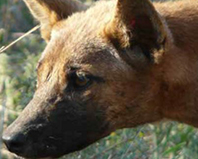Read the latest information on
Foot-and-mouth disease
 The National Wild Dog Action Plan 2014-2019 is now well underway, with a number of notable achievements under its belt. These include the improved alignment of state wild dog management strategies, a more robust and consultative governance framework and the development of a skill set in wild dog management for professional pest animal controllers.
The National Wild Dog Action Plan 2014-2019 is now well underway, with a number of notable achievements under its belt. These include the improved alignment of state wild dog management strategies, a more robust and consultative governance framework and the development of a skill set in wild dog management for professional pest animal controllers.
The Australian and Queensland Governments also recently announced a joint offer of more than $5.2 million dollars to assist landowners in Central Western Queensland manage wild dog populations. This commitment captures the plan’s emphasis on a collaborative, multi-pronged approach to combat wild dog predation.
However, despite the plan’s significant progress in improving wild dog management, this feral pest remains a major biosecurity problem that imposes substantial costs on cattle, sheep and goat industries. Therefore, it is crucial for producers to employ techniques on their property to reduce the economic and personal impacts of wild dog populations.
Animal Health Australia’s Executive Manager Biosecurity Services, Duncan Rowland, said that the most important action producers can take to combat wild dogs is to work with neighbours, their local community and other producers in their region to develop a coordinated approach to feral animal control.
“Wild dogs don’t respect state borders or property boundaries, so isolated or individual action isn’t always successful in addressing the problem.
“Instead, a collaborative approach adopted by several producers in a particular region can be a more effective way to manage the impacts of wild dogs, especially as the producers involved can select strategies that suit their needs and local area,” said Mr Rowland.
Some of the strategies available to producers are coordinated baiting (including aerial) and trapping, exclusion fences (including electric), trained doggers, trappers, licensed shoots and a financial bounty for wild dogs.
Other measures include regularly checking and mending broken fences, ensuring farm buildings are in good repair, protecting feed and water sources and disposing of any carcasses properly and promptly.
Producers may also see the value in monitoring and recording wild dog incidents as part of a wild and feral animal control program for their property or consider guardian animals such as donkeys, alpacas or Maremma dogs to reduce the risks associated with feral pests.
For more information visit our Ferals and Weeds page or WoolProducers Australia National Wild Dog Action Plan.